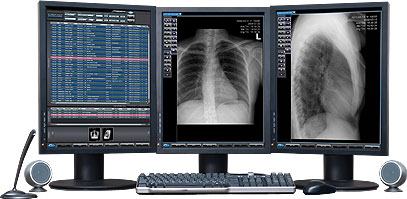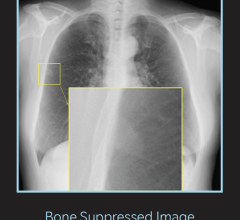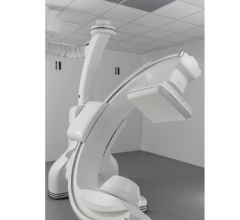
Teleradiology service companies have become an accepted part of the image-reading landscape in the United States, with general estimates suggesting that about half of U.S. radiology practices use their services. Although the relationship between teleradiology companies, hospitals and radiology centers continues to evolve, there is no doubt that teleradiology is a useful service for many institutions.
When a hospital considers utilizing a teleradiology service, it typically finds that there are many from which to choose. In addition, there are many factors to take into account in order to assess which one will best fit an individual hospital’s needs.
To provide some insight into how to make a decision, Imaging Technology News surveyed several teleradiology companies to ask for their advice. Following are highlights of their comments.
Availability, Flexibility and Good IT
Most of those surveyed were in agreement that a teleradiologist should be available 24/7, not just to do readings, but also to answer questions, if needed for clarification.
“It should be the responsibility of the teleradiology provider to make your job easier,” said Amy Cruz, marketing communications manager with Imaging on Call LLC, Poughkeepsie, N.Y. “This includes having the reading radiologists available at any time to discuss findings, questions or other issues.”
It can be advantageous to have a teleradiologist available for in-person interactions from time to time as well. “Just as the hospital expects participation from all medical departments, the radiology department should expect participation from its teleradiology provider,” said Ryan Pahler, director of sales and marketing, Online Radiology Medical Group, Riverside, Calif. “[For example,] is a radiologist available to attend medical staff meetings or departmental meetings at least once per year? Will the teleradiologists and support staff develop relationships with on-site physicians and staff?”
Another important consideration is that the teleradiology company has the flexibility and capability to adapt and grow as its customers grow. Kerry Couples, senior director of marketing communications for Nighthawk Radiology Services in Scottsdale, Ariz., refers to this as “depth of service offerings.”
“At some point, the needs of the hospital could change and [it will] need many services from its provider,” Couples said.
As might be expected, information technology (IT) factors are critical in choosing a provider.
“The infrastructure in which teleradiology studies are transmitted is a crucial component in the operation of a teleradiology provider and should be a key factor in the selection of a vendor,” said Cruz. “The vendor’s platform should be easily integrated with the hospital’s current system. Teleradiology providers should frequently evaluate their picture archiving and communication systems (PACS) or radiology information systems (RIS) to make sure they’re using the most up-to-date technology available. Proper IT support is also essential.”
Greg Rose, CEO of Nightrays in Littleton, Colo., also suggests some IT-related considerations. “Top teleradiology companies put a significant portion of their fees into improving the reliability and efficiency of their service. Some companies offer their RIS/PACS systems for hospital use,” he said. “Some competitors have created their own radiology information systems so they can be customized to perform special functions for teleradiology. Ask references whether these features are useful. How often is their system down? (No fair if the hospital’s Internet is down.) Ask references about tech support. Fast, friendly, helpful?”
In addition, the quality of the radiologists is paramount. Vijay Vonguru, president of Vesta Solutions in Lake Mary, Fla., said a hospital should evaluate the credentials of the reading radiologists. Cruz said that having a pool of radiologists that can offer a variety of subspecialties for reads is another consideration.
Rose also offered an interesting point. “A good radiologist is willing to learn from mistakes, review weak areas, continue to learn new things and make the work environment, albeit remotely, a pleasant and safe place.”
Foreign vs. Domestic Reads
Since the very nature of teleradiology brings with it the possibility of being based anywhere in the world, a discussion of the pros and cons of foreign versus domestic reads comes into play in choosing a provider. Our survey participants all shared their views.
“It is always recommended to use radiologists that are certified by the American Board of Radiology (ABR). In fact, nearly all customers require physicians to be ABR-certified and U.S.-based,” said Pahler. “However, an ABR-certified radiologist can read from anywhere, as long as he/she is properly licensed in the state in which the study is performed. The downside to reading from outside the U.S. is that the physician cannot be reimbursed by Medicare or Medicaid for final interpretations, which are often the most cost-effective choice.”
“If you are a teleradiology provider that performs preliminary reads as a primary source of revenue, then resources outside of the U.S. are a great option. There is a very talented group of radiologists that live abroad and still can be very productive for our healthcare system,” said Cruz. “However, if you do final read interpretations, it’s imperative that a large percentage of your radiology staff is based in the U.S. This isn’t just because people prefer to have U.S.-based resources. This is to prevent any issues for billing Medicare and Medicaid studies. Currently, the Centers for Medicare & Medicaid Services will not provide reimbursement for studies read abroad.”
“Using board-certified foreign radiologists is okay to a certain extent for prelim cases,” Vonguru said. “We don’t want to use them too much, as it’s difficult for the foreign-located rads to keep up with the current trends as much as the domestic ones.”
Couples said, “Reads done from another country are fine if the radiologist is U.S. board-certified, licensed and U.S.-trained. It should not make a difference where the radiologist is sitting.”
“There is a benefit to American board-certified rads doing nighthawk work from Australia or Israel or India,” said Sunita Maneshwari, marketing, Teleradiology Solutions, New Haven, Conn. “They use the time zone advantage to have fresh and awake radiologists, so quality improves. Additionally, the price can be lower, since one doesn’t need to pay top dollar for a rad to stay up at night.”
Rose also mentioned the price and time difference advantages of foreign reads. “Due to cost-of-living issues in some foreign countries, radiologists there can be paid less by the teleradiology company, and these savings can be passed to the consumer,” he said. “It is a challenge finding good radiologists willing to read at night, but halfway across the earth, when it is night here in the U.S., it is day there.”
He, too, noted the Medicare factor in reimbursement for final reads as an advantage for the domestic side, although he added, “The problem is that it is frequently not known whether a case is a Medicare case until after the case is dictated. Unless the teleradiology company is sure the case is not a Medicare case, the only safe option is to just provide prelims. However, more facilities are moving towards final reads in 24 hours, making prelim-reads-only a limiting service.”
There are intangible factors that come into play, too, Rose said. He has found that clients often have a higher comfort level dealing with a company based in the U.S. and can feel more patriotic by supporting American radiologists, although he commented, “I would be interested in the results of any surveys that have quantified the emotional and patriotic drivers in this decision.”
Hospital’s IT Capabilities
When it comes to utilizing teleradiology services, a hospital should evaluate its own capabilities in certain areas to ensure success. There are factors that require coordination and capabilities from both the provider and the client.
For example, both parties must keep in mind the need for privacy and security with regard to patient data. It also is important to evaluate the capabilities for backing up data, as well as what will happen if/when service interruptions occur, such as when Internet, drives, software or phone lines go down.
Integration of the teleradiology group’s hospital information system (HIS), RIS, electronic medical records (EMRs) and PACS systems with the hospital’s is essential. Cruz added one thought in this area.
“Seemingly, with today’s technology, this should all come standard with a teleradiology provider,” she said. “However, keep in mind that it is often not the technology that is the issue. Rather, it’s the people responsible for administrating the technology that have the limitations.”
What’s on the Horizon?
In its survey of teleradiology service companies regarding how to choose a provider, ITN asked them to comment about trends they see emerging in the field and what they anticipate for the coming months. Following are their comments:
- Ryan Pahler, Online Radiology Medical Goup — There is a move toward total coverage or a hybrid solution. Many hospitals are looking to consolidate the number of contracts that need to be managed and want to find one provider that can offer all services.
- Amy Cruz, Imaging On Call LLC — First, onsite services: The trend of teleradiology companies providing onsite services to hospitals has been on the rise. The radiology groups contracted with the hospitals have expressed concern over these teleradiology providers taking over the actual contract and displacing the group. Contracting with a vendor that has made a commitment against these predatory practices is common.
Second, development of mega-groups: There is an increasing belief that groups will begin to merge so they can scale and provide the additional services in-house vs. outsourcing to a teleradiology provider.
Third, reimbursement: Reimbursement rates continue to decline. This makes for a more and more competitive environment. This market competition has caused traditional practices and teleradiology practices to evaluate their own businesses and make sure they can be profitable at their core competency.
- Vijay Vonguru, Vesta Solutions — We see some more hospitals turning towards final reads to cut down costs. There is also a trend towards reducing Locums and using telerad groups in their place. Finally, there will be pressure on small rad groups to merge with telerad groups, as the hospitals look for more subspecialties.
- Kerry Couples, Nighthawk Radiology Services — 1) Final reports instead of a preliminary report to the emergency room; 2) Small telerad companies/large radiology groups utilizing teleradiology to secure hospital contracts.
- Sunita Maneshwari, Teleradiology Solutions — More need for stat finals and day stats.
Read the related article "Teleradiology 3.0: Transitioning to Distributed Radiology."
Compare services between teleradiology companies in the Teleradiology Comparison Chart - www.itnonline.com/content/teleradiology-services. Access will require a login, but it is free and only takes a minute to complete the form.


 December 05, 2025
December 05, 2025 








